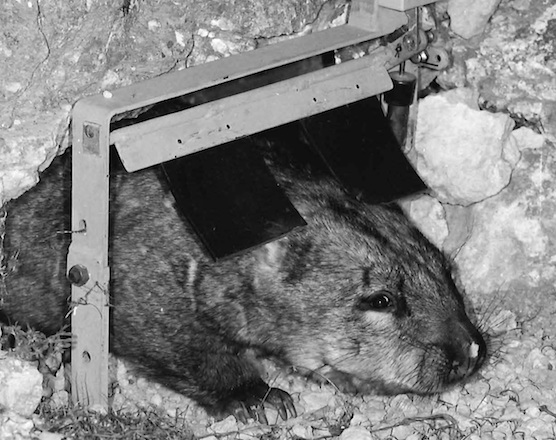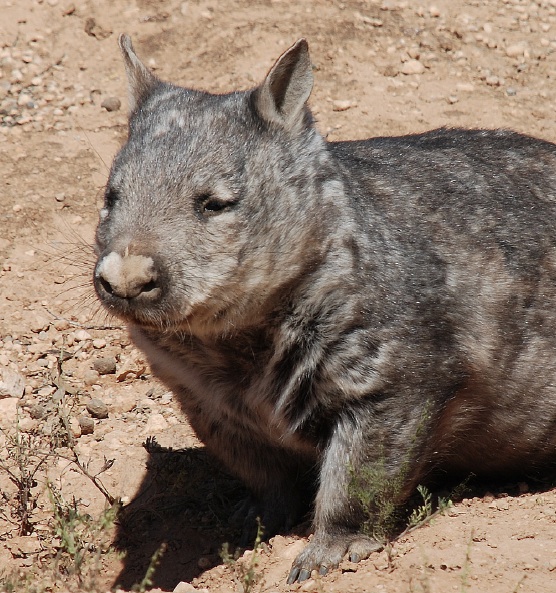Moorunde Wildlife Reserve was established in 1968 for the purpose of providing a sanctuary for the Southern Hairy-nosed Wombat. As part of assessing the effectiveness of the sanctuary, society member Glen Taylor undertook a study to estimate the wombat population on the reserve. The ongoing study commenced in 1970 and Glen has continued surveying and collating results. It is likely the longest running survey of its type.
Just how does one estimate the number of wombats living in a particular area? These are shy, nocturnal animals that spend most of their day in complex underground burrows. Not an easy animal to see, let alone count!
Glen developed a method to estimate the population of wombats through observing signs of animal activity at burrows and warrens (consistent with the Society’s research principle of minimal interference). Correlation of signs of animal activity to warren population have been calibrated over time by monitoring wombat traffic through all burrow entrances of a selected warren. Every three months, all warrens in two specific study areas have been surveyed for particular wombat activity and every two years, all warrens on the entire Moorunde Wildlife Sanctuary have been surveyed.

Wombat tripping burrow entrance switch, 1970s, Glen Taylor
In 1971, the original Moorunde Wildlife Reserve (covering an area of 2,000 ha or 5,000 acres) was surveyed and a total of 409 warrens and 1,825 individual burrows were mapped! In 2006, the job of surveying was dramatically increased when the reserve was extended to the present total area of 7,000 ha (17,000 acres). In 1977, Glen produced a publication “Moorunde Wildlife Reserve: Wombat Population Study Progress Report”. Glen has also provided regular progress reports that have been published in the Society’s journal “Natural History”.
At our AGM on 21 May 2019, Glen presented, “Wombat Population Study in Moorunde Wildlife Reserve Study Areas”. This was an update on his long-term population study of the southern hairy-nosed wombat (Lasiorhinus latifrons) that he had earlier presented at the “Wombats through Time and Space 2018 Conference” in September 2018.
Copies of the publication and regular journal reports are available here:

Wombat basking above its burrow, October 2008, Glen Taylor
